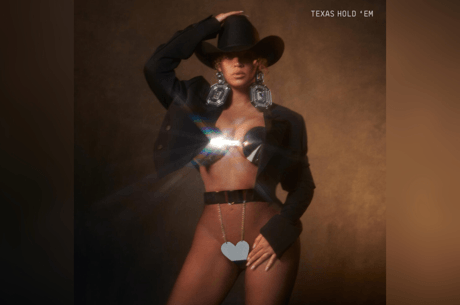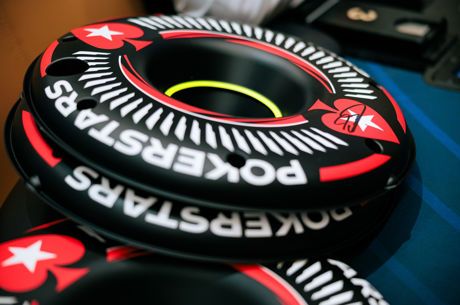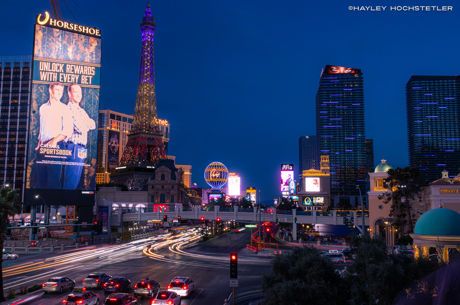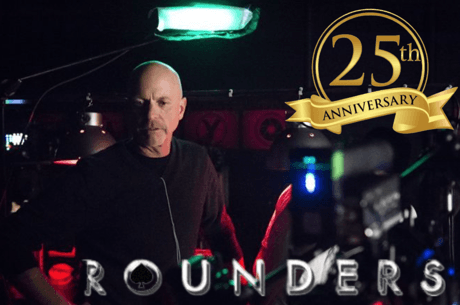Poker & Pop Culture: Jack Binion Sorts Fact From Fiction Regarding Moss-Dandolos Match

A couple of weeks ago here in a "Poker & Pop Culture" column I shared the story of a much discussed heads-up poker match thought to have occurred nearly 70 years ago between a couple of eventual Poker Hall of Famers — Johnny Moss and Nick "The Greek" Dandolos.
To be more precise, what I shared was the story of the stories that have been told about that (alleged) multi-million dollar poker match. After all, so many of the details regarding what actually happened between Moss and Dandolos are uncertain, and even the whole idea that the match took place at all doubted by some.
The title of the column thus asked a question: "Moss and Dandolos at the Horseshoe — Legend or Myth?"
We aren't able to ask either Moss or Dandolos about the story, nor Benny Binion who according to the tale is said to have arranged the match between Moss and Dandolos to be played at what was then his new casino, Binion's Horseshoe.
But there's one person who can shed some light on the mystery surrounding the match, and he's offered to do just that — Benny's son Jack Binion, who helped run Binion's Horseshoe, was president of Binion's when the first World Series of Poker was introduced there in 1970 and during the WSOP's growth over subsequent decades, and who like Moss, Dandolos and his dad has also been inducted into the Poker Hall of Fame.
So how does Jack Binion answer that "legend or myth" question about the famous poker match between Moss and Dandolos at the Horseshoe?
Short answer — myth!
The Story of the "Biggest Game"
As covered a couple of weeks ago, the frequently told version of the story of the Moss-Dandolos match begins shortly after Benny Binion purchased the El Dorado on Fremont and renamed it the Horseshoe.
Soon the wealthy businessman Nick "The Greek" Dandolos arrived in Las Vegas. Al Alvarez provides a version of the story in his excellent 1983 book The Biggest Game in Town, the title of which in part alludes to Dandolos's desire to play for the highest stakes possible.
According to Alvarez, "Benny Binion, with a shrewd eye for free publicity for his newly acquired casino, offered to set up a game, provided it was played in public." Dandolos agreed, Binion called on his friend from Texas, Johnny Moss, and the game was on.
Alvarez dates the match as occurring in 1949, while others have said 1951. He describes the match (quite precisely) as having lasted "almost exactly five months," with Dandolos finally resigning after having lost a considerable sum ("the rumor says two million," says Alvarez).
Alvarez also highlights the match and the idea of having spectators watch high-stakes poker as direct inspiration for the WSOP, saying that "The World Series was first held in 1970, but the idea of originated in 1949." This and other details of Alvarez's account — gleaned from interviews conducted in 1981 in Las Vegas — have been subsequently repeated many times over during the decades since.
A Private Game at the Flamingo, Not a Public One at the Horseshoe
That account was summarized in the article that appeared a couple of weeks ago. A few days later, I received a note from Jack Binion's assistant.
Binion celebrated his 80th birthday earlier this year, and after a long career in the industry now oversees an office that manages the family's investment real estate holdings. He remains very active as well, and besides offering help with anything managed by the office also still enjoys skiing and fishing.
"Mr. Binion saw the article 'Moss and Dandolos at the Horseshoe - Legend or Myth,'" his assistant wrote. "He has some insight that can finally clear up, once and for all, that very question."
"There was a big game at the Horseshoe in the early '50s, but Nick didn't participate."
To address the heart of the matter first, Binion explains that Johnny Moss and Nick Dandolos did play a poker match in 1949, although it was not at the Horseshoe at all. Nor was it the months-long spectacle open to spectators many have suggested the match to have been.
"It took place at the Flamingo," Binion explains. Also, it was "not in public." This, he notes, was a quote from Dandolos himself.
Meanwhile a few years later there was another poker game involving Moss, this time at the Horseshoe.
"There was a big game at the Horseshoe in the early '50s," Binion explains, "but Nick didn't participate." The game featured "multiple players" including Moss, who came and went as the game continued around the clock. Unlike the game at the Flamingo in 1949, the later one "was held in public."
The confusion, Binion surmises, likely stems from Moss having participated in both games. But there was never one between him and Dandolos at the Horseshoe, and the pair never did have a high-stakes heads-up battle in public.
Not an Inspiration for the World Series of Poker
Binion adds a couple of other points of clarification to present and future poker historians.
One concerns the source of Dandolos's wealth, although there, too, uncertainty remains. He "did not make his money in banking and real estate," as some have suggested. "Even then it was a mystery where his money came from, but probably from family wealth."

Meanwhile, with the 48th annual WSOP now well underway, Binion can help us also with one other oft-repeated aspect of the mythical Moss-Dandolos match.
"The Moss and Nick the Greek game was not the inspiration for the WSOP," Binion notes. Indeed, given the fact that the Moss-Dandolos match at the Flamingo wasn't played in public, it doesn't rightly figure to have been a precursor to the later series — a link repeated many times over.
Some have doubted the connection before, such as Des Wilson who in Ghosts at the Table (2008) characterizes the idea as a "false assumption." "If the Horseshoe match took place," writes Wilson, "it did not inspire the launch of the World Series."
In fact, Jack was there with his father Benny when the true inspiration for the WSOP took place. As he confirms, both were present at the famous "Texas Gamblers Reunion" staged by fellow Texan Tom Moore along with Vic Vickrey at the Holiday Hotel and Casino in Reno in 1969.
The gathering featured a series of high-stakes cash games, and afterwards the Binions asked Moore if he planned to run the gathering again the following year. Moore said he did not, describing it a "loss leader."
"Benny asked him if he would mind if they hosted an annual tournament based on the game," is how Jack Binion recalls it. "He said he didn't mind and the World Series was born."
"Like Many Poker Stories, It Grew Over the Years"
There have been skeptics. Poker author and player Michael Craig (The Professor, the Banker, and the Suicide King) in particular was expressing well founded doubts about the "legendary" Moss-Dandolos match a decade ago.

Writing then on his blog, Craig commented on the paucity of references to the match prior to the one appearing in The Biggest Game in Town, including no mentions of it either in Dandolos's 1966 obituary nor by Benny Binion in a lengthy interview he gave about the history of the Horseshoe and WSOP to the University of Nevada Las Vegas in 1973.
Speaking to James McManus for the latter's Cowboys Full (2009), Craig says he believes "the whole thing wasn't made up, but like many poker stories, it grew over the years."
Moss may have been a primary culprit here, having been among the sources for Alvarez in his telling of the story. (See Jesse May's comments at the end of the earlier article for more thoughts about such embellishments.)
In any case, Jack Binion's clarifications help us see how Craig was more or less correct about the matter. Moss and Dandolos did play poker with each other — at least that much was true. But as often happens in poker, the tale of their game grew into something much greater than it ever really was.
Special thanks to Jack Binion and Tina Morris.
From the forthcoming "Poker & Pop Culture: Telling the Story of America's Favorite Card Game." Martin Harris teaches a course in "Poker in American Film and Culture" in the American Studies program at UNC-Charlotte.
Photos: , flipchip, ; , UNLV Special Collections on the World Series of Poker, ; Nick Dandolos, public domain.









